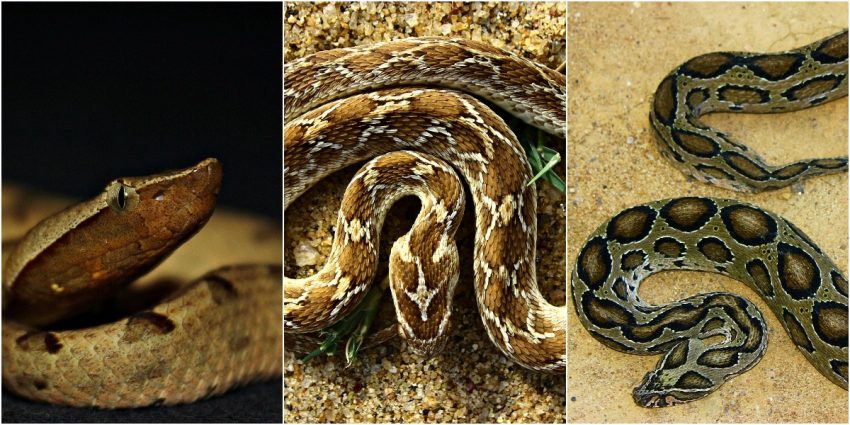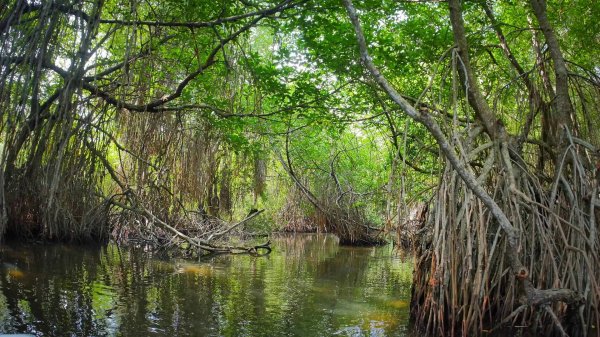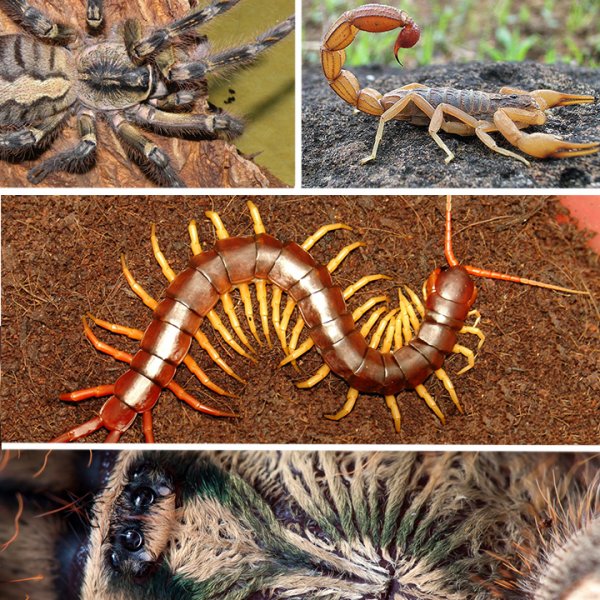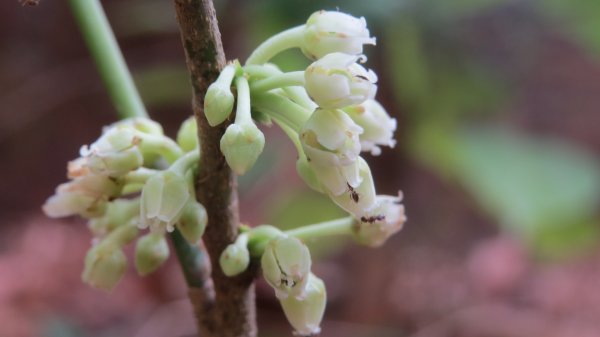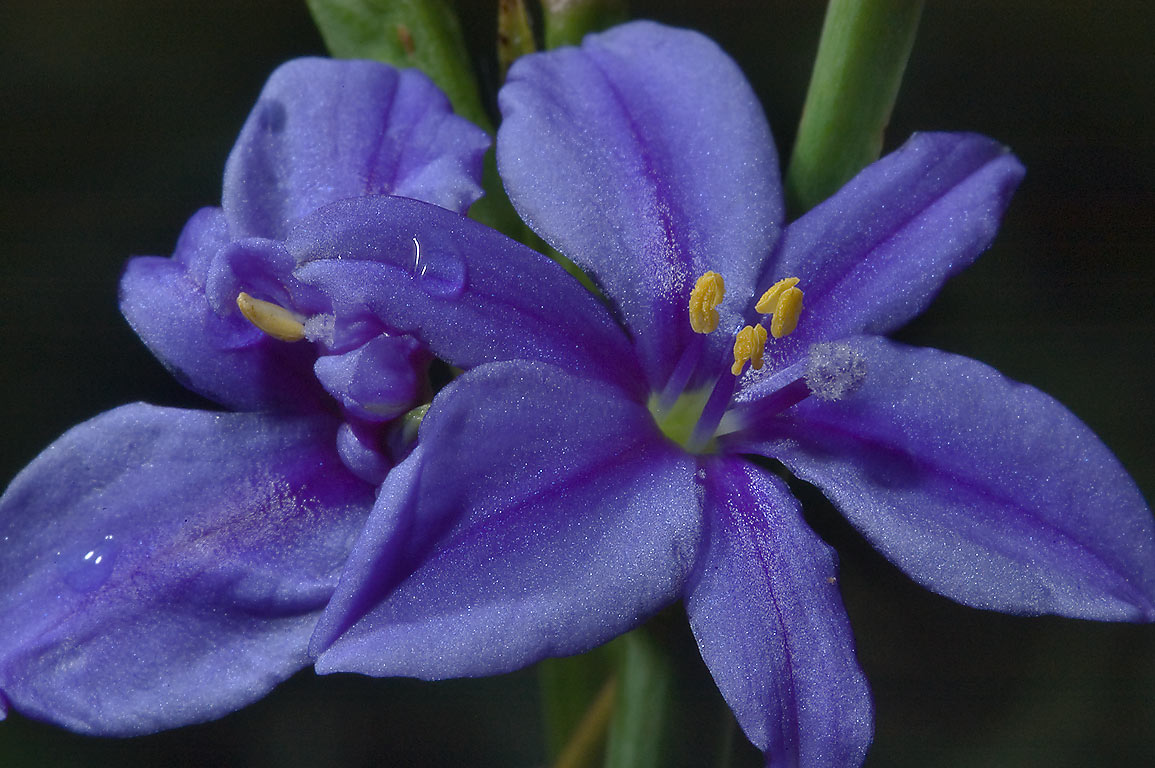
Sri Lanka is considered one of 35 biodiversity hotspots in the world due to the wealth of flora and fauna found on the island. According to the National Red List on the Conservation Status of the Fauna and Flora in Sri Lanka, there are about 3,150 species of flowering plants on the island, a large number of them endemic. Despite this, there are several invasive alien species of plants spreading rapidly across the island. Invasive alien species of plants refer to plants that were either intentionally or accidentally introduced to Sri Lanka, which have since taken root and spread rapidly, adversely impacting natural ecosystems either by competing with natural resources, or through predation.
Here are seven invasive alien plants found in Sri Lanka:
Velvet Tree
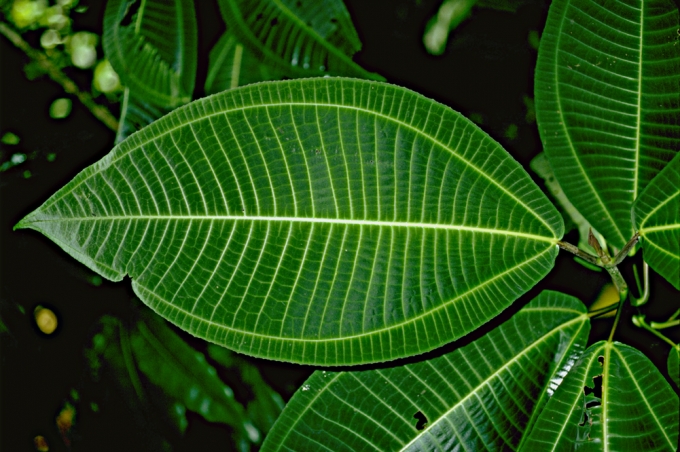
The Velvet Tree’s bicolour oblong leaves can grow upto a metre in length. Image courtesy calphotos.berkeley.edu
Velvet Tree, or Miconia calvescens is a plant native to Central and South America. It was introduced to Sri Lanka as an ornamental tree in 1894 but has since become an invasive species in the montane regions of the island – especially in the areas of Ginigathhena, Nawalapitiya and Watawala. The Velvet Tree is so called because of the dark purple underside on its leaves – the top of the leaf however is dark green. The plant can grow to about 15 metres in height and its oblong leaves can grow up to a metre in length. The tree flowers several times a year and bears fruit simultaneously. The tiny purple fruit is sweet when ripe and packed with about 120–230 minuscule seeds that are attractive to birds and other animals which disperse them. The Velvet Tree grows quickly in forest gaps and open areas and forms dense thickets that absorb nutrients from the soil and block sunlight from reaching the forest floor, so that few plants under its canopy can survive. It has a shallow roots system that is believed to contribute to landslides. The Velvet Tree is listed in the IUCN World’s 100 Most Invasive Species and is known as the “green cancer” of Tahiti and the “purple plague” of Hawaii.
Sikkim Knotweed
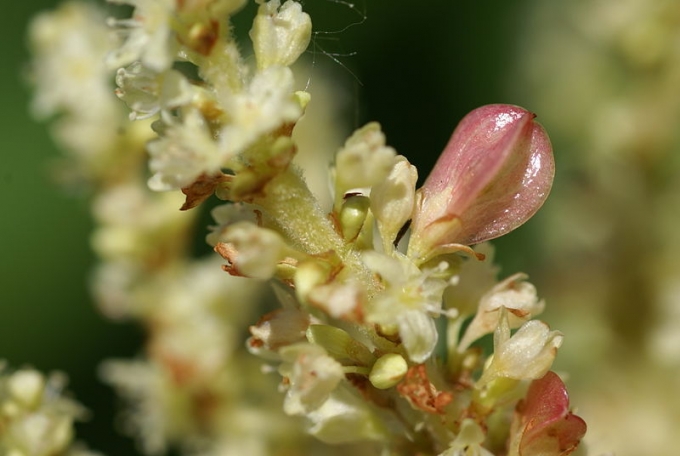
The Sikkim Knotweed grows aggressively in the high montane areas of Sri Lanka. Image courtesy en.hortipedia.com
Sikkim Knotweed, or Sikkim potherb – Aconogonon molle, also known as Polygonum molle, is a plant native to the central and eastern Himalayas, India – especially in Garhwal and Assam, Nepal and eastward to China. It was discovered and described by the botanist David Don in the 19th century and later classified into a valid botanic system in the family of Polygonaceae (Buckwheat) by Hiroshi Hara in 1966. It is unclear when the plant was introduced to Sri Lanka, but it is presumed to have been brought in as an ornamental plant. This invasive alien species can be found only in the high mountain zone of Sri Lanka, in areas in and around the Nuwara Eliya town. The Sikkim Knotweed is a shrub that grows in thick groves to a height of about 1 – 1.5 metres. Its leaves grow alternately, are elliptical, long and wide and are about 7-18 cm long. Its stem is hairy. The plant flowers during the July-September period, and has a large number of small white, or yellowish-white flowers arranged in a loose branching cluster. Plants that live for over two years also produce nuts. The shrub grows aggressively and in thick clumps preventing other native species from taking root.
Porcupine Flower

The Porcupine Flower has fragrant, pineapple-scented leaves. Image courtesy nybg.org
The Porcupine Flower, Centratherum punctatum, is alternatively known as the Pineapple Flower, the Brazilian Daisy, the Bachelor’s Button and the Lark Daisy. The plant is a native to Central and South America – especially Brazil, but is also found in the Philippines, Australia, Africa, Madeira, the West Indies, and islands in the Pacific Ocean. It was introduced to Sri Lanka as an ornamental flower, although it is unclear when. It is a herb (a seed-bearing plant without a woody stem, that dies after flowering), and grows to about 10 – 50 cm tall. Leaves are of a narrow oval shape, tapering to a point at each end and are pineapple scented, for which reason it is considered an ideal candidate for wreaths or potpourri. Flowers bloom within the June – September period and are purple, foliaceous and solitary – attached at the base, without a stem. The plant has been observed to spread rapidly across all parts of Sri Lanka, using up land resources and preventing other plants from taking root. In many countries the Porcupine Flower is considered a weed. It is classified as an invasive alien species in Hawaii, the Galápagos Islands, New Caledonia, Puerto Rico and the Virgin Islands, and was only recently classified as an invasive alien species in Sri Lanka.
Blue Stars
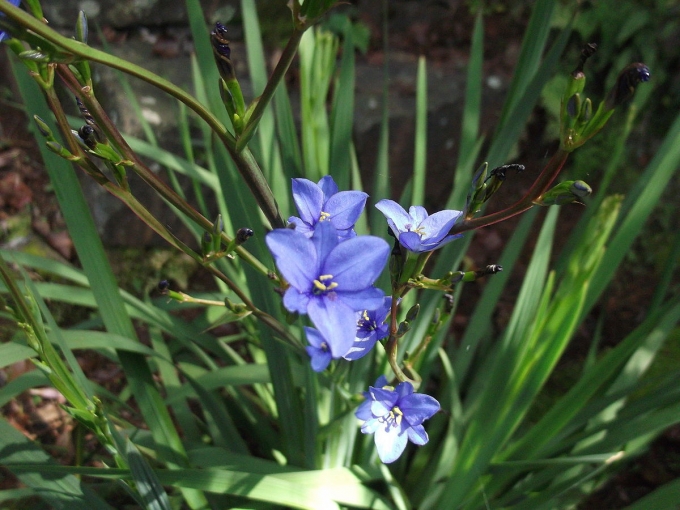
Blue Stars are produced in succession over an extensive period, but last only a day. Image courtesy wikipedia.org
Blue Stars, Aristea ecklonii , is also known as Blue Flies, the Blue-eyed iris and the Blue corn-lily. Its name arises from the Latin word arista, meaning ‘spike’ or ‘point’, referring to the leaves of the plant, and ecklonii after Christian Ecklon, a Danish botanist, apothecary and plant collector. The plant is a native of central and southern Africa and was introduced to Sri Lanka as an ornamental plant, although it is unclear when. It has since spread rapidly, especially in the higher elevations – in the Nuwara Eliya district, at the Galway’s National Park and at the Horton Plains National Park. It is a herb that grows upto 60cm tall with leaves that are upright, long, sword-shaped and basal. Flowers are numerous, and grow in clusters of about 2-4. They are a deep blue and last only a day, but are produced in succession over an extensive period, specifically between September – December. Flowers develop into capsules containing many dark red-brown seeds that are dispersed by wind and water and germinate fast. The plant grows in shrubland, open and disturbed forest as well as on streambanks and on rocky, bare land in a dense clump that is impenetrable and displaces other plants.
Common Water Hyacinth

The Common water hyacinth cloggs waterways and irrigation networks. Image courtesy swbiodiversity.org
The Common water hyacinth, or eichhornia crassipes (known as japan jabara colloquially) is a floating freshwater plant that is considered pernicious and highly-invasive. This fast-growing plant is native to South America, specifically the Amazon basin, but has since spread to North America, Europe, Australia, Africa, New Zealand and many other countries. It was introduced to Sri Lanka as an ornamental plant from Hong Kong in in 1905 and spread so rapidly, that a Water Hyacinth Ordinance was introduced in 1909. The plants clogs waterways and irrigation networks and prevents native aquatic plants from thriving. It creates septic and odorous conditions and is known to deplete oxygen in the water, killing fish and other aquatic life. It is also a prime habitat for mosquitos. The plant is listed as one of the IUCN World’s 100 Most Invasive Species and is known in India as the ‘Terror of Bengal’. Countries, including Sri Lanka work hard to control the plant, before it covers lakes and ponds entirely. The plant is free-floating, its leaves are thick, glossy and ovate, and rise to about three feet above the water. It grows multiple lavender-blue flowers in a single spike about 12 in. long and can grow faster than any other tested plant, doubling in as little as 6 days.
Giant Salvinia
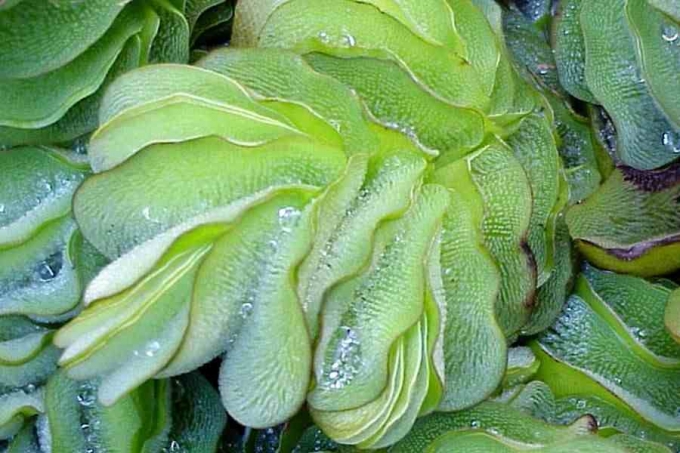
The Giant salvinia forms dense, impenetrable mats on the water, affecting aquatic life. Image courtesy keyserver.lucidcentral.org
The giant salvinia, Kariba weed, African payal or Salvinia molesta is a floating aquatic fern that thrives in freshwater. It is native to South America, specifically south-eastern Brazil, and northern Argentina. It was introduced to Sri Lanka as educational material in 1939, but has since spread rapidly, affecting waterways and irrigation systems. It is widely seen in the low country wet and dry zones and was declared a noxious weed under the Plant Protection Act in 1952. The plant has two types of leaves – emergent and submerged; the emergent leaves are green and obovate in shape, and the submerged leaves are brown, feather-like, and often mistaken for roots. The emergent leaves measure around 2.2 cm in length and 1.3 cm in width and have surface ‘hairs’ that split and then rejoin at the tips, forming a cage like structure that resemble ‘egg beaters’. The giant salvinia is a fast-grower and can double its population in a week to ten days. It forms dense, impenetrable mats that block sunlight and reduce oxygen in the water, affecting aquatic life. It also makes fishing, boating, swimming and other recreational activities impossible. The giant salvinia was, in 2013, elected one of the IUCN World’s 100 Most Invasive Species.
Lantana

The Lantana flowers form in clusters of numerous tubular flowers that vary in colour. Image courtesy wikipedia.org
Lantana, or Lantana camara (big-sage, wild-sage, red-sage, white-sage and tickberry) is locally known as ‘gandhapana’. It is a plant native to Central and South America but has since naturalised in as many as 60 countries in 5 continents. Lantana is believed to have been introduced to Sri Lanka as an ornamental plant through the Royal Botanic Gardens, sometime around 1826 – this is however unconfirmed due to the absence of proper documentation records. The plant is a shrub which can grow to a height of about 2 m, and forms dense thickets that crowd out other native species and reduce biodiversity. The leaves are oval, have a scalloped, serrated edge and are quite rough to touch, although the underside is soft and hairy. The flowers form in clusters of numerous tubular flowers that vary in colour (from white, cream, yellow, orange, red, pink, purple) in over 100 different combinations. The fruit is purplish-black or bluish-black and fleshy and glossy and contains 1-2 seeds, which are dispersed by birds and other animals. The Lantana is one of the earliest classified invasive alien plants in Sri Lanka and has spread widely across the island, invading the Udawalawe National Park, significantly reducing the grazing lands for elephants.
Containing invasive alien species of plants is an ongoing effort and methods include a combination of physical, chemical and biocontrol processes. In some case, plants are physically uprooted and burnt, while in other cases herbicides are used to stem the proliferation of these plants. In Sri Lanka, in the case of the giant salvinia, or the Salvinia molesta, the coleopteran weevil, Cyrtobagous salviniae was introduced as a biocontrol agent in the mid 1980’s, but it failed to produce expected results. The mottled water hyacinth weevil – Neochetina eichhorniae and the chevroned water hyacinth weevil, N. bruchi were introduced as agents to control the Common water hyacinth, or eichhornia crassipes, but have also failed to produce results. In a bid to strengthen the battle with these invasive alien species, a National Policy on Invasive Alien Species in Sri Lanka, Strategies and Action Plan was implemented by the Ministry of Mahaweli Development and Environment in 2016, with a focus on prevention, early detection, rapid response, containment, control, eradication and restoration of ecosystems.
Cover: Blue Stars, or Aristea ecklonii was introduced to Sri Lanka as an ornamental plant. Image courtesy asergeev.com

